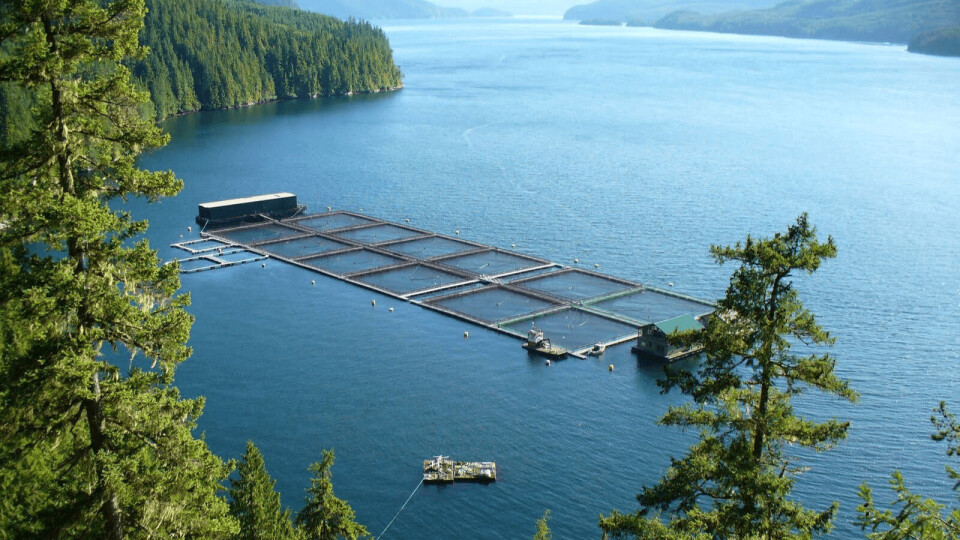
BC lice miscounting claims 'inaccurate, unsupported’
Salmon farmers in British Columbia have described a researcher’s claims that farms regularly under-count sea lice as “inaccurate and unsupported”.
They have also pointed out that “perhaps inadvertently” the work shows that during the five-year period studied sea lice levels were below limits.
The research, titled “Bias in self-reported parasite data from the salmon farming industry”, was published on Wednesday in the journal Ecological Applications, and is based on an analysis of publicly available data from 91 aquaculture operations in the province between 2011 and 2016.

‘A pretty obvious result’
The study purports to show that mandatory sea lice counts performed by the operators of the fish farms drop by between 15% and 50% when they’re not being done during an audit by Fisheries and Oceans Canada (DFO).
“That isn't really a minor effect. This is a pretty obvious result,” lead researcher Sean Godwin, who conducted the research for his PhD at Simon Fraser University, told the Canadian Broadcasting Corporation (CBC).
According to Godwin’s research, the numbers of Caligus clemensi jumped by a factor of 1.95 and Lepeophtheirus salmonis counts increased by a factor of 1.18 during the months when the DFO was auditing sea lice counts.
‘Conflict of interest’
Salmon farms are required to perform monthly lice counts and make those numbers publicly available, but fisheries officials perform occasional, pre-arranged audits. If louse counts are too high, farmers must treat their fish.
“These treatments are expensive, and so there’s obviously a potential conflict of interest there in that the farms are the ones counting the sea lice,” said Godwin, a research fellow at Dalhousie University.
In a statement, the BC Salmon Farmers Association claimed the study made inaccurate and unsupported claims about how salmon farmers counted sea lice between 2011 and 2016.
“There is no question good science is incredibly important in the effective management of sea lice. However, a review of this report makes it clear the issue is not with salmon farmers’ sea lice counting, but with the model created for this study by its authors,” said the BCSFA.
Complex model
“The report by Sean Godwin et. al is presented as a direct comparison of sea lice data collected by salmon farmers and submitted to the DFO with audits conducted by the DFO. However, that’s not what it actually does. Rather, the study’s authors created a complex model themselves to try and estimate what sea lice counts should have been in the past, and report on variance from their own model to actual sea lice counts. The model feels rushed, and is based on assumptions that aren’t clear in the study and don’t reflect a number of complex variables including the reality of ocean conditions.
“Perhaps inadvertently the report indicates that in the period studied (2011-2016) sea lice levels on salmon farms were well-managed. Even if you accept the report’s modelling numbers rather than the actual data, they found sea lice counts were well under the threshold above which treatment is required.
Third-party audits
“BC salmon farmers are committed to managing sea lice effectively, and strong monitoring is a key part of that. We strive for accurate counting, good training of aquaculture technicians doing that work, and confirm our performance with internal and third-party certification audits.”
BCSFA spokesperson Shawn Hall told CBC that 80% of Atlantic salmon farms in BC have been audited by a third party, the Aquaculture Stewardship Council (ASC), and that the audits include checks for sea lice.
He said salmon farms do not under-report lice loads.
In a Facebook post, Michelle Franze, the BCSFA’s communication and partnerships manager, said: “As a Dalhousie University science grad I am appalled at the use of resources to push a political agenda and an inaccurate study.
“Correlation doesn’t mean causation and this is not supported by any evidence other than the authors’ own model, which is based on complex and incorrect assumptions.”























































